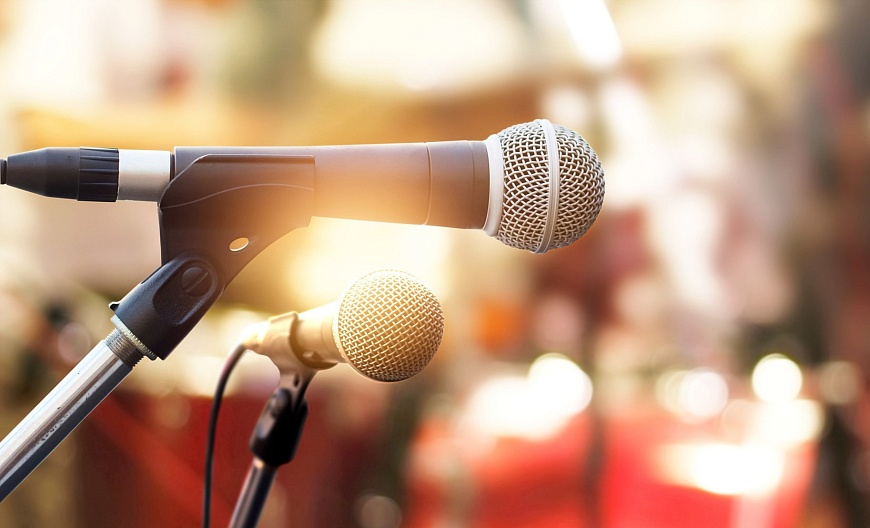Cart 0

Choosing a microphone
Do you need a good quality microphone for rent? The very first thing you will pay attention to and carefully study is its characteristics.
Characteristics of a professional microphone
- Sensitivity (the minimum sound level that the microphone perceives, measured in dB or mV/Pa)
- Sound pressure level (the maximum volume level received by the microphone)
- Frequency response (the frequency range in which the microphone generates sound)
- ADC bit depth and sampling frequency (the higher the bit depth and sampling frequency, the closer the digital sound is to the original analog)
- Signal-to-noise ratio (determines sound distortion, measured in dB)
- Nominal impedance (affects the compatibility of the microphone with the connected equipment)
- Cable length or range (determines the degree of freedom of movement and ease of use of the device)
When choosing a microphone, also consider:
- Purpose
- Microphone type
- Directionality
- Power supply
- Interfaces
- Body material
- Manufacturer
There are 3 types of microphones:
- Condenser (used to record sound in the studio or at home). Advantage – minimal distortion when recording sound, wide frequency range. Disadvantages – high price, sensitive to temperature and humidity, requires additional power from a battery, from the network, or from a connection port.
- Dynamic (used for live sound at concerts, performances and various events, in karaoke clubs). Advantage – low price, no need for additional power supply, high strength and shock resistance of the structure, the ability to record sound with high sound pressure, less sensitivity to extraneous noise. Disadvantages – the sound is inferior to condenser microphones in transparency, purity and naturalness.
- Electret (the characteristics resemble condenser models). Advantages – they are distinguished by their low price, compactness, excellent resistance to external influences. Disadvantages – additional power supply, and some models of these microphones are sufficiently powered by a battery, while others require a more powerful connection via a connector.
Depending on their purpose, microphones are:
- Concert. They are used at live concerts and performances, microphones can be wired or more convenient radio microphones. The requirements are the same: increased reliability and shock resistance.
- Studio – for recording musical instruments and vocals. They are among the most expensive, but the final recording quality depends on the equipment with which the studio microphone will be used.
- For conferences. They are distinguished by good sound transmission quality, used for press conferences, lectures, etc.
- For video production. Dynamic omnidirectional microphones are suitable for “field” reporting, and condenser unidirectional or bidirectional models are suitable for studio work. For video camera microphones
- Computer microphones are the simplest and cheapest models. They are used for communication via the Internet, as well as for voicing video clips. The requirements for them are much lower.
By directionality, microphones are divided into:
- Unidirectional or bidirectional (perceive sound from only one or two sides)
- Omnidirectional or broadband (perceive sound from any point of the sound source).
Some models have a directionality switch that allows you to change the direction of the microphone as desired.






